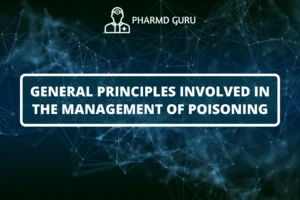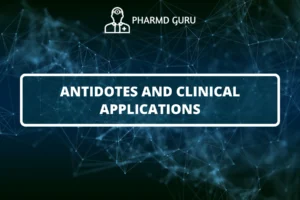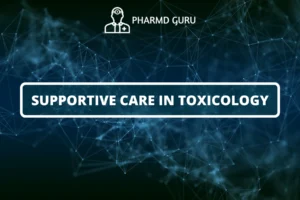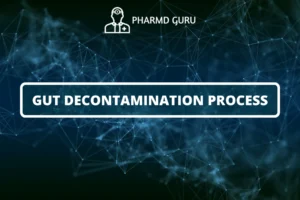Cannabis, also known as marijuana or weed, is a psychoactive substance derived from the Cannabis sativa plant. It contains various active compounds, with delta-9-tetrahydrocannabinol (THC) being the primary psychoactive component. In this article, we will provide an introduction to cannabis poisoning, including its active principle, sources, mechanism of action, clinical effects, investigations, and management.
SCROLL DOWN TO THE BOTTOM OF THE PAGE FOR ACTUAL NOTES
TABLE OF CONTENTS:
- Introduction to Cannabis Poisoning
- Active Principle and Sources
- Mechanism of Action
- Clinical Effects of Cannabis Poisoning
- Investigations for Cannabis Poisoning
- Management of Cannabis Poisoning
1. Introduction to Cannabis Poisoning
Cannabis poisoning refers to the toxic effects that can occur following the consumption or exposure to cannabis products containing high levels of THC. The potency of cannabis has increased over the years, leading to a rise in cases of cannabis poisoning, especially in individuals with limited tolerance or accidental ingestion.
2. Active Principle and Sources
The active principle in cannabis responsible for its psychoactive effects is THC. It is found in varying concentrations in different parts of the Cannabis sativa plant, including the flowers, leaves, stems, and resin. Cannabis products, such as marijuana cigarettes or edibles, are the common sources of THC ingestion.
3. Mechanism of Action
THC acts on specific receptors in the brain known as cannabinoid receptors. The primary receptors involved are CB1 receptors, which are abundantly present in areas of the brain associated with cognition, memory, coordination, and pleasure. When THC binds to these receptors, it alters neurotransmitter release and disrupts normal brain function, leading to various psychological and physiological effects.
4. Clinical Effects of Cannabis Poisoning
The clinical effects of cannabis poisoning can vary depending on several factors, including the dose, route of administration, individual tolerance, and the presence of other substances. Common clinical effects may include:
- Euphoria and relaxation: Cannabis can induce a sense of euphoria, relaxation, and heightened sensory perception.
- Altered perception and cognition: THC can distort perception of time, space, and sensory experiences. It may also impair memory, attention, and concentration.
- Increased heart rate and blood pressure: Cannabis use can cause an increase in heart rate and blood pressure, potentially leading to cardiovascular complications in individuals with pre-existing conditions.
- Psychiatric effects: In susceptible individuals, cannabis use can trigger or exacerbate mental health conditions, such as anxiety, paranoia, and psychosis.
- Impaired coordination and motor skills: Cannabis can impair coordination, balance, and motor skills, increasing the risk of accidents and injuries.
5. Investigations for Cannabis Poisoning
Diagnosing cannabis poisoning typically involves a thorough clinical evaluation, including a detailed history of cannabis use or exposure. Laboratory tests are not routinely used to confirm cannabis poisoning but may be helpful in excluding other potential causes of symptoms or detecting the presence of other substances.
6. Management of Cannabis Poisoning
The management of cannabis poisoning is primarily supportive and aimed at alleviating symptoms and ensuring the safety of the affected individual. The following measures may be taken:
- Monitoring and observation: Close monitoring of vital signs, mental status, and hydration status is essential to ensure the individual’s well-being.
- Supportive care: Providing a calm and supportive environment can help manage anxiety and agitation. Reassurance and psychological support may be beneficial.
- Symptomatic treatment: Specific symptoms, such as anxiety or nausea, can be managed with appropriate medications as needed.
- Prevention of complications: It is important to prevent injury by ensuring a safe environment and addressing any potential risks associated with impaired coordination or altered perception.
ACTUAL NOTES




